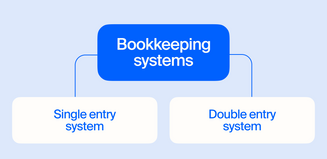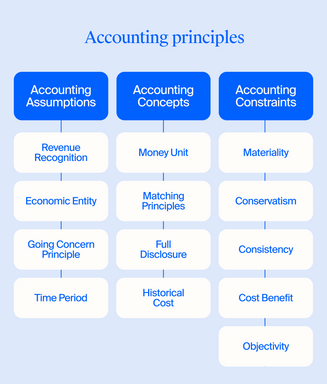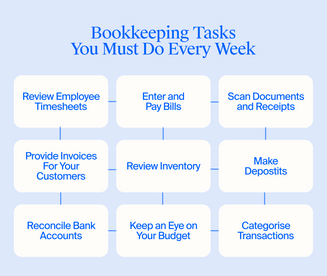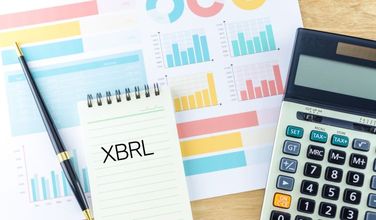Bookkeeping: Definition, Importance, Types and Tasks
- Modified: 5 September 2023
- 6 min read
- Bookkeeping


Lim Wan Er
Business Writer
Always game for a good cup of iced latte and soggy fries, Lim Wan Er indulges in a solo vacation at least once a year for the sole purpose of exploring the local cuisine.
Bookkeeping is a key element of company accountancy. It’s the process of tracking, recording and reporting a business’s financial transactions.
Bookkeepers manage the information that’s required for financial reporting, taking care of tasks such as bills, invoices and tax returns.
What Is Bookkeeping and Why Is It Important?

Bookkeeping is essential in measuring and monitoring business performance. Keeping up-to-date records of transactions allows you to generate accurate financial records, which are also useful when it comes to tax reporting and financial management.
As bookkeeping and accountancy are time consuming, many businesses look to accounting outsourcing to take care of financial matters for them.
Types of Bookkeeping

Bookkeeping involves recording financial information. That starts with importing transactions. These are then categorised, so that businesses can produce financial reports. The process can be done using paper records, spreadsheets or accounting software.
Paper records are becoming obsolete because of the time it takes to record and process information, and issues with accuracy. Spreadsheets are powerful tools, but require business owners to take the time to input data. Accounting software has become the most common way for small businesses to manage their books because of the ease at which they can process information.
Methods of Bookkeeping
There are two main types of bookkeeping: Single-entry bookkeeping involves making one entry for each transaction; and double-entry bookkeeping balances your books by assuming each transaction affects two accounts.
Single-entry Bookkeeping
Single-entry bookkeeping is straightforward — you simply make one entry for each transaction in your books. This method allows you to keep a cash book to track incomings and outgoings. You can perform single-entry bookkeeping yourself, making it useful for very small businesses.
Double-entry Bookkeeping
Double-entry bookkeeping is a more secure method. It balances your books by assuming each transaction (recorded as debit or credit) affects two accounts — your cash account and your sales account.
For example, if you make a sale, your cash account will be debited and your cash account will be credited, so they equal each other. Double-entry is useful because it minimises errors and most businesses use this system.
Cash-based or Accrual-based
You also need to decide between cash or accrual-based bookkeeping, which depends on when you recognise revenue and expenses. Both work with either single or double-entry records, though the former is better suited to cash-based and the latter to accrual-based.
If you recognise revenue when you receive cash and recognise expenses when you pay them, you should use cash-based bookkeeping. This means you record cash entering and leaving your accounts in your books.
If you recognise revenue when it’s earned and recognise expenses when they’re incurred, you should use accrual-based bookkeeping. This means cash doesn’t have to enter or leave your accounts for you to record transactions, so you can recognise sales and purchases on credit immediately with this method.
Principles of Bookkeeping

Bookkeepers understand how to categorise financial transactions, including what account payments should be attributed to and their tax status. For example, a business spending money on travel, advertising and rent will record those payments against different «accounts» in their books. This allows them to be treated differently for tax and understand what types of things the business is spending money on.
If you’re doing your own bookkeeping, you need to develop knowledge of how common types of transactions should be recorded. Understanding these basic principles allows you to ensure the business’s books and records are accurate.
How To Record Entries in Bookkeeping
The easiest way to manage the books of a new business is to use accounting software. In that case, transactions are automatically and securely imported from your bank account. You can then categorise them and add useful information through a process called reconciliation. It’s also possible to set up rules, so common transactions like paying staff or sales are recorded automatically.
If you are using a spreadsheet, it needs to be set up to record the information you’ll need to understand transactions and run reports. This includes what money was spent on or received for, the date and the relevant tax code. It’s unusual for new businesses to keep paper records. In this case, they tend to use preformatted notepads to create ledgers.
Cash Registers
If you have a bricks-and-mortar business like a shop or restaurant, you may use a cash register as part of your bookkeeping process. A cash register keeps count and reconciles cash transactions and allows you to balance the drawer, which accounts for all transactions on any given day. A cash register audit is essential for spotting errors.
Journal
When entries are recorded in a journal, they are recorded as raw business transactions in date order. A journal tends to be divided into columns for dates and types of transactions, ie. debits or credits. It’s the first place where data is recorded. A bookkeeping journal is also known as a day book.
Ledger
A ledger is the book that bookkeepers use to record all accounts. Transactions that first appeared in a journal are put into a ledger. It keeps track of five accounting items: assets, liabilities, owner’s capital, revenue and expenses.
These items are usually displayed in a two-column table, with debit entries on the left and credit entries on the right. Sometimes, descriptions and dates are added. From here, account balances are calculated and entered into a trial balance, before they are added to a company’s official financial statements.
Trial Balance
A trial balance is a bookkeeping tool in which the ledger balances are sorted into equal debit and credit account column totals. A business usually prepares a trial balance at the end of every reporting period. The purpose of a trial balance is to ensure the entries in a company’s bookkeeping system are correct.
Bookkeeping Effect on Account Charts

Bookkeepers manage the data that’s inputted into an accounting system. That means the process plays a critical role in ensuring the accuracy of information. If a transaction is recorded to the wrong account, it can affect the tax treatment and where the amount appears on key reports.
That means bookkeeping can have a direct impact on account charts; if information is incorrectly recorded it will change what’s displayed in charts. A crucial role of a bookkeeper is to ensure information is recorded correctly and charts can be created with confidence.
Key and Typical Bookkeeping Tasks

Bookkeepers are responsible for providing accurate financial information about a business by keeping track of and reporting on day-to-day incomings and outgoings.
A bookkeepers’ duties include recording and reconciling daily transactions, verifying receipts, creating and sending invoices, assigning tax rates, tracking overdue payments, keeping an eye on cash flow and preparing financial statements.
It’s common for bookkeepers to produce regular reports about the business, including management accounts and tax and government filings.
FAQ
What are the different types of bookkeeping?
Single-entry bookkeeping is straightforward - you make one entry for each transaction. This method allows you to keep a cash book to track incomings and outgoings. You can perform single-entry bookkeeping yourself, making it useful for very small businesses.
Double-entry bookkeeping is a more secure method. It balances your books by assuming each transaction (recorded as debit or credit) affects two accounts - your cash account and your sales account.
Is bookkeeping a dying trade?
The increasing popularity of accounting software has made it easier to process financial transactions and produce reports. For example, Osome’s software automatically and securely imports and processes data from business owners’ bank feeds. This has replaced some of the work bookkeepers do.
Where do I start with bookkeeping?
Bookkeeping involves processing transactions, money that’s being paid to your business or you’re spending. That starts by deciding what system you’re going to use. It’s common for businesses to use a spreadsheet or online accounting software. Then you need to set up your system and start recording transactions.
What exactly does a bookkeeper do?
Bookkeepers process financial information. They track transactions and assign them to different spending and income categories. They may also complete tasks like creating invoices, dealing with receipts and running payroll. This information is often processed using online accounting software.
What is the difference between accounting and bookkeeping?
In basic terms, bookkeepers record your company’s day-to-day financial transactions, while accountants analyse, interpret and report them monthly, quarterly or annually and file tax returns. Small businesses can get by without a bookkeeper as every accountant is qualified to perform bookkeeping duties, but it doesn’t work the other way around.
Learn more about how accounting is different from bookkeeping.
Get expert tips and business insights
By clicking, you agree to our Terms & Conditions, Privacy and Data Protection PolicyWe’re using cookies! What does it mean?






